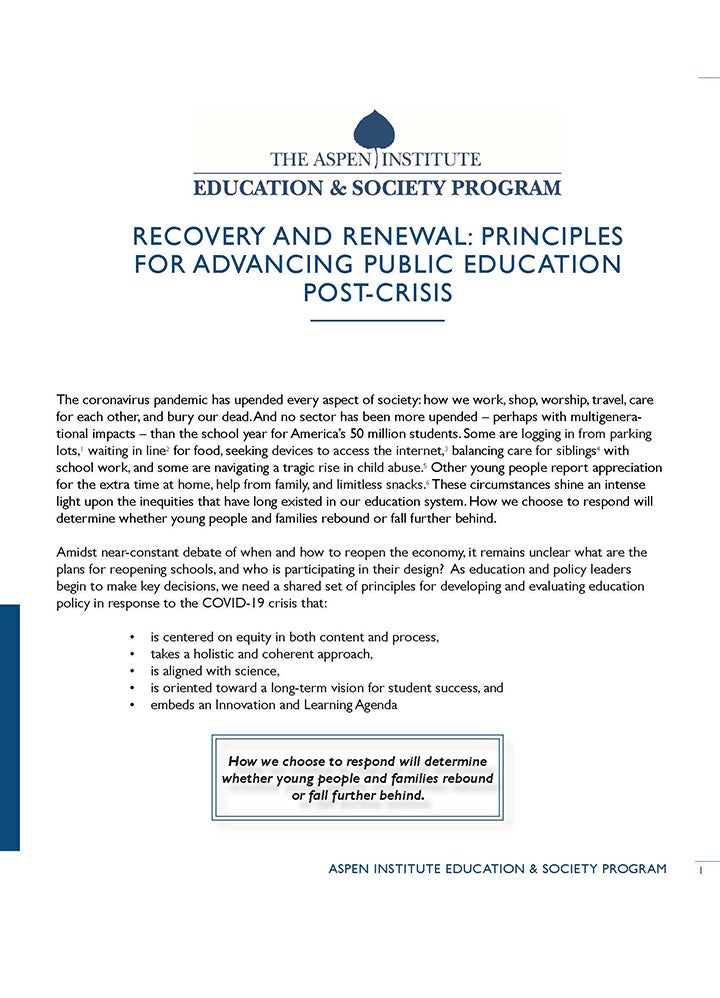The coronavirus pandemic has upended the school year for 50 million American students, and revealed the best and worst of public education: the best in terms of the heroic response by so many educators, support staff, students, and parents; the worst in terms of the intense light shone upon inequities that plague our system. As policymakers and education leaders plan to re-open buildings for school year 2020-21, they face important questions about how to capitalize on our strengths and finally deal with our weaknesses. We must be clear-eyed that inequity outside of school — like food insecurity, the digital divide, and the uneven experience of stress and trauma — is replicated and exacerbated by pervasive inequity inside of school. Going back to the status quo ante would leave many students and communities without what they need educationally. Therefore, the nation’s response to the pandemic must re-open schools and renew the promise of public education as an engine of opportunity.
In this paper, the Institute’s Education & Society Program proposes five principles to guide recovery and renewal:
1) Ensuring equity and engagement;
2) Using a holistic view to set a coherent strategy;
3) Being guided by the science of learning;
4) Taking a long-term view of student success; and
5) setting an agenda for innovation and continuous improvement.
These five principles create a context for productive deliberations and shared decision-making. Each principle calls out actions to be taken, and presents promising practices. Governors and those in the K-12 system are called to act, as are advocates. Most importantly, all are called to listen to students and parents, involving them deeply in a renewal of the social contract that finally gives everyone an ownership stake in public education.


